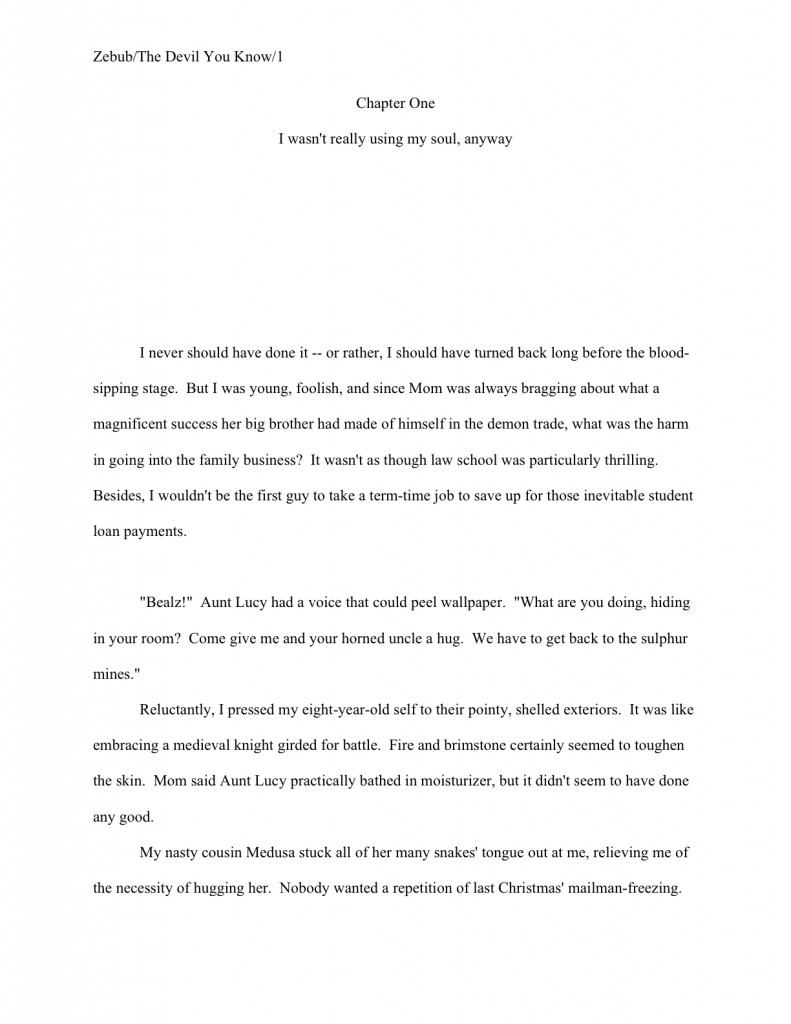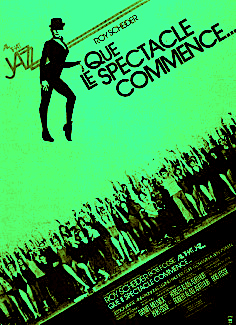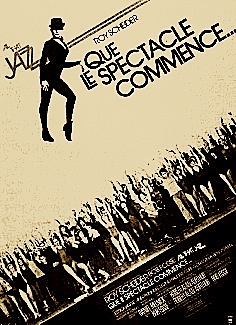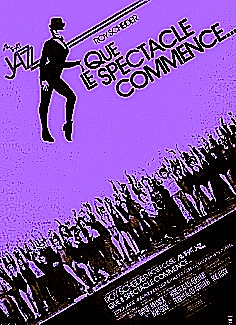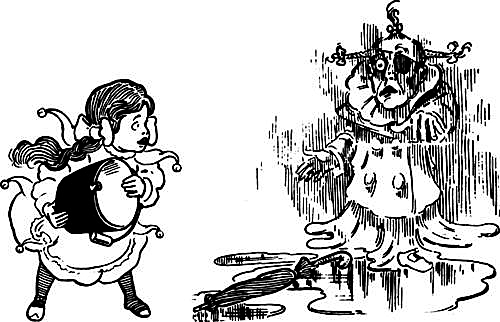
I intended to post this self-portrait a few days ago. Don’t blame me: the flu snuck up behind me, repeatedly bopping me on the head. Which perhaps explains why there are four iterations of me in the reflection, instead of the usual one; if you don’t think that this year’s flu has the power to shred the soul into several jagged shards, or at least bifurcate it into the part that’s coughing mercilessly and the part that’s anxiously looking out the window for the undertaker, well, I’m guessing you haven’t had it yet.
And I hope that none of you do. It’s not an experience worth living through, even for the sake of writing about it later. But here’s a tip, just in case infection does catch up with you: do not, I implore you, use your convalescent time to peruse the latest news about changes in the publishing world. It might just kill you.
When you’re ill, you want your will to live bolstered, right, not rapidly drained away?
Think I’m kidding? Okay, try this little experiment: turn your head, cough — and contemplate Amazon’s recent press release asserting that on Christmas Day, more customers bought Kindle versions of books than physical copies.
Now, do you feel better or worse than before you began the experiment?
Admittedly, this downloading fiesta is best contemplated while carrying a giant grain of salt in one hand and waving a banner reading caveat emptor with the other. After all, it’s only reasonable to expect people who got a Kindle for Christmas to hop right on the downloading bandwagon, pronto. Their ardor may well cool as the weeks pass.
But still, that chilling claim bears thinking about, if you happen to be a writer. At least, one who is — or ever plans to — making a living by writing books.
Strange days for writers, these; the miasma of murky copyright issues hovering around electronic publication has been engendering some pretty fascinating discussion — and, let’s face it, quite a bit of anger. Ursula K. LeGuin, for instance, has just resigned from the Authors’ Guild because, she says, she felt that its settlement with Google did not adequately protect its members’ rights. That was both brave and generous of her — an author as established as she has been for many years (and deservedly) is unlikely to suffer anywhere near as much as the legions of authors who will come into print over the next few years.
So on behalf of all of us: thank you, Madame LeGuin, for thinking of us. I’m perpetually shoving fledgling SF and fantasy writers in the direction of THE LATHE OF HEAVEN as a crash course in craft. And what’s not to admire in an author of your stature’s tackling the TAO TE CHING?
She’s not the only one, either — to register a public protest of the changing writerly landscape, I mean, not to explicate Taoism.
Sherman Alexie has been arguing, and cogently, that authors are in a battle to the death for their rights. Kudos to you, sir — and I thought your most recent book, WAR DANCES, was far more interesting a literary experiment than many reviewers seemed to notice. May your inventiveness and copyright protections endure long.
And they are certainly not the only authors who feel that the book may be tumbling down the same slippery slope as new music: still profitable for the companies doing the releasing and those artists lucky enough to have established a fan base before the industry transformed, but darned hard for anyone newer to the game to make a living at it. The game is changing, and not in a manner at all likely to enable the struggling writer to move out of that picturesque garret, or even to quit his day job: as I mentioned the other week, over the last couple of years, the disparity between bestselling authors’ advances and first-time author’s is about as great as it has ever been, and just keeps widening.
Which would concern me less, I must admit, if pretty much every author I know weren’t being expected these day to invest more resources than ever before in promoting her own books. Is it me, or is there something wrong with the math here?
Still, the picture is not all gloomy. Until I know for sure that the Kindle and similar devices can be used to read in the bathtub without being potentially life-endangering, I have to believe that the physical book serves a necessary function that cannot easily be supplanted by electronics. I do read the writing trades every day, however — in electronic form, I must admit — so I’m not laboring under any illusions that publishing isn’t going to have to change somehow. I’m just not convinced that it’s going to be as radically as we’ve all been asked to believe.
Case in point: if memory serves, practically the instant the internet hit the mainstream — i.e., when it stopped being almost exclusively the playground of academics and computer geeks, two groups for which I harbor considerable affection, and became absorbed into the non-specialist’s everyday life — media types threw up their hands in a panic, insisting that conventional shopping was dead. Within just a couple of years, these minor-key Nostradamuses (Nostradami?) assured us, no one, but no one, was going to be buying so much as a can of beets at the local grocery store. The internet was going to handle all commerce, we were told; the storefront mercantile would soon be as dead as the dodo.
It’s years later now. Tell me: where was the last place you bought beets?
For me, it was my local farmers’ market. Very good they were, too. Lovers of good literature are still trekking to the corner store for those beets, bless their hearts, if in dwindling numbers, And in case nobody out there has noticed it, it’s only the sales of new books that are dismal — used books are, I’m told by thems as know, actually selling better since the beginning of the economic downturn.
See my earlier comment about reading the bathtub. It’s a socio-economic phenomenon worth considering, I tell you.
Soggy pages and beet salad aside, I am darned worried about the future — and present — of the working author. Which is why, in case any of you had been wondering, I skipped running my usual GREAT GIFTS FOR WRITERS WITH GREAT GIFTS series this year: right now, I think the best thing any of us can do to help ourselves or the authors we admire is to buy books by living writers.
Oh, any of the gifts I suggested in the GREAT GIFTS series (gathered for your convenience under the category of the same name on the archive list at the lower right-hand side of this page, should any of you still be trawling for gifts) would probably make a serious writer happy, particularly the one where kith or kin create time or space for the writer to, well, write. That invaluable present has the advantage of being either very expensive (some of the writers’ retreats out there are essentially resorts, and are priced accordingly) or very inexpensive (what writing parent wouldn’t love a hand-colored book of gift certificates for undisturbed writing hours from a 7-year-old willing to play quietly by herself?)
Yet for months now, whenever I have been asked to suggest a present, I’ve simply told the asker to run, not walk, to the nearest physical bookstore, preferably an independent one that truly supports living writers, like Seattle’s Elliott Bay Books or Portland’s Powell’s — both of which will happily issue gift cards in any amount, you know — and start exercising some literary taste toute suite. Because as I have said before here at Author! Author!, and shall no doubt say again, if we writers want a world where new voices can break into the biz, we need to keep buying books.
Speaking of which, a quick reminder: between now and the end of the year, FAAB (Friend of Author! Author! Blog) author and hyper-generous soul Mary Hutchings Reed will be donating $1 per copy sold of her novel, COURTING KATHLEEN HANNIGAN, to Lawyers for the Creative Arts, a Chicago organization providing pro bono legal services to emerging artists, as well as 50 cents per copy to the Seattle YWCA for its GirlsFirst project because, well, it’s a cause I like. Full details of the charity drive may be found here, but to whet your appetite for literature:
Courting Kathleen Hannigan tells the story of an ambitious woman lawyer, one of the first to join a male-dominated national law firm in the late seventies, whose rise to the top is threatened by a sex discrimination suit brought against the firm by a junior woman lawyer who is passed over for partnership because she doesn’t wear make-up or jewelry. When Kathleen Hannigan is called to testify, she is faced with a choice between her feminist principles and her own career success. Courting Kathleen Hannigan is a story for women and minorities everywhere who are curious about the social history of women in law, business and the professions, institutional firm cultures, and the sexual politics of businesses and law firms.
Please consider helping us raise some money for these very worthy causes, by the karma-fluffing means of — wait for it — buying a book by a living author. Amazon offers it both in hard copyand for Kindle. In case, you know, anyone wants to enjoy the irony of ordering the latter.
Better still, buy it “directly from the author or from a great independent bookseller like Village Square Books (and you thought I forgot your impassioned plea for indie booksellers, Pat! Never let it be said that a reader left a good argument in my comments in vain.)
If not this book, by all means, pick another. And another and another, selected from the part of the bookstore where you hope one day to see your magnum opus gracing a shelf. Because the best, the most unarguably successful means of convincing agents and editors that there’s a market for books like yours is for readers like you to buy, you guessed it, books like yours.
That’s enough preaching for one day, I think; I’m feeling quite winded. Before another coughing fit carries me off, let’s knuckle down for some more discussion of self-editing for pace.
Last week, we were chatting about the desirability of structuring your submissions to avoid that most subjective of pitfalls, being boring. The problem is, a lack of tension — an extremely common cause of ennui amid agency-habitué set — is one of the hardest traits for a writer to spot in her own work. Especially, for some reason, in novels and memoirs.
Partially, I think, this writerly blind spot tends to be the a side effect of working so hard on plotting. The protagonist needs to get from Point A to Point B in a scene, and if the narrative gets her there in a fairly expeditious and plausible manner, we tend to be satisfied.
For the first draft, anyway. Then, if we’re good revisers, we suddenly awake one fine morning and exclaim, “Wait — there’s more to telling this story than getting to the end of it, isn’t there? Might I conceivably make some changes that — dare I say it? — render the protagonist’s journey from A to B more enjoyable for the reader?”
Oh, you may laugh, but you wouldn’t believe how often it comes as a surprise to aspiring writers who eschew revision that the manuscript not only needs to be a good story well told, but entertaining to boot. “But my novel/memoir/analysis of the rise of the Visigoths isn’t meant to be merely entertaining,” these first-draft lovers exclaim indignantly. “This is a story that needs to be told. If potential readers just want to be entertained, they’ll simply flop down in front of their TVs or computers.”
Precisely. Wouldn’t you rather that someone who liked to read would pick up your book and continue to peruse it with pleasure than surf the internet for, say, beets?
Like it or not, part of the job description for being an author involves entertaining people, regardless of the type of book. Good writing beguiles, among other things; it should not bore.
Before any of you begin rolling your eyes and decrying the decline of literature, allow me to add: Robert Louis Stevenson (after whom my junior high school was named, perversely enough) once compared the working life of the professional writer to that of a fille de joie. (If you can’t extrapolate what that is, your parents probably wouldn’t appreciate my filling you in.) Readers, even those who prefer the most literary of literary fiction, the most serious political analysis, or, heaven help us, in-depth discussions of semiotic theory, engage in the practice because they enjoy it.
As a matter of marketing, not to say ethics, I think it’s self-defeating to blame them for that. Or punish them with turgid prose.
Am I being a bit too subtle here? Okay, I’ll take off the gloves and take another swing: it’s pretty apparent to Millicent the agency screener — and, indeed, any other professional reader — when a writer who does not care enough about his readers’ enjoyment of his book to revise, or even re-read, his own manuscript before submitting it. Among other things, an obvious first draft (and they are often very obvious indeed to Millie) sends a signal that here might be a writer who will kick and scream if an agent or editor asks for any revisions whatsoever.
Yes, yes, I know: that’s a radical conclusion based on some pretty scant evidence. But remember, Millicent’s job is first and foremost to reject manuscripts, not to give them a nice, long chance to entertain her.
I suspect, too, that many, many writers worry a touch too much about making their protagonists seem like nice people, at the expense of other, more risky character development. Manners are certainly delightful and desirable in individuals, but when courtesy takes over dialogue for any length of time, the result can be deadly. Take, for example, this sterling bit of prose:
Everett lifted his hat, a well-creased Homburg inherited from his father, a man known all across the Back Bay for his impeccably-groomed head. “I’m delighted to meet you, Maude.”
“Likewise, I’m sure.” Maude waved him to a chair. “May I offer you anything to drink? Coffee, perhaps? Tea? I could sacrifice a goat.”
Everett scanned the tiny dorm room; it contained neither refrigerator nor hot plate, and the ambient smell, while possibly at one time food-related, did not suggest grounds. “Nothing, thanks.”
Maude began to burrow in her purse. “I suppose you are curious about why I asked you here.”
“I am, rather.”
Did you notice how the pace of the scene stopped DEAD after Everett thanked Maude? There was a palpable lull, from which the reader was only saved by all of that purse-rummaging. Pretty remarkable, given that one of the characters here is evidently not averse to a spot of blood-shedding.
I tell you, lovely manners can be death to a scene. Minimize their appearance.
Don’t believe me? Okay, glance over that micro-scene again. Are you at all curious about what happens next? Do you want to hear more about either of these characters? To be blunt about it, have you in fact learned anything from that group of 103 words (yes, I checked) that could not have been easily conveyed in all of its glory in the following 36?
“Coffee?” Maude asked.
Everett scanned the tiny dorm room; it contained neither refrigerator nor hot plate, and the ambient smell, while possibly at one time food-related, did not suggest grounds. “Why did you ask me here?”
See how much snappier the second version is? Here we see in action tried-and-true editors’ trick: don’t have the characters answer questions just because they are asked.
Seriously — it’s often an almost instant scene-enlivener. While of course it is polite in the real world to respond directly and promptly to the queries put to one, a narrative that exhibits a slavish adherence to having all questions answered the very instant after they are put — and having characters answer them absolutely directly, truthfully, and completely — can get boring FAST.
Why? Well, characters who do this–– as most characters in most novels submitted to agents and editors do, I tremble to report — are the last thing you want an interesting character to be: predictable. REALLY predictable.
Take another gander at the shortened scene. Does Everett come across as particularly impolite? Not really. Both characters still come across as relatively nice people, but now, the reader is not invited to dwell on their manners — which, by definition, are impersonal, rather than habits that reveal individual character, right? — but instead is drawn into the mystery of why Everett has been asked to this strange dorm room.
Let me repeat something I just mentioned parenthetically, because it may be on the final exam: manners, like clichés, are reflections of social norms, not individual characteristics. Therefore, while showing a character deviate from good manners or mangle clichés can be effective character development, cliché-spouting (dangerous even as a comic device, in a submission) and courteous speech actually do not tell the reader much about the characters who emit them.
So when your protagonist shows what a nice guy he is by saying please, thank you, and asking about acquaintances’ mothers’ respective healths, he is not actually revealing much who he is as a person. He might be demonstrating something about the people who raised him, of course — while no one can deny that part of Elvis’ complicated charm was that he called people older than himself “sir” and “ma’am,” the fact that he habitually did so was certainly his parents’ and teachers’ doing, right? — but part of the point of good manners is that they are used socially to avoid insulting anyone.
Or to put rude people in their place. That, however, is conflict, and needs to be shown explicitly in the narrative; remember, however vividly the speaker’s tone may be heard in the writer’s head, the reader can’t know about it unless it shows up on the page. If the narrative simply assumes that the reader will fill in the necessary details, Millicent is all too likely to conclude with a yawn that politeness on the page is simply good manners, not tastefully-concealed conflict.
That’s not such an unwarranted conclusion: let’s face it, courtesy is generic. Manners are most people means concealing a part of their true identities, at least in the moment. Complete honesty tends not to be polite — and, as anyone who has spent 20 consecutive minutes with a small child can tell you, politeness is the learned skill, not truth-telling.
While absolute truth-telling is actually rather rare in adult life, except in small bursts — please tell me that no one is shocked to hear me say that — small, inadvertent pieces of self-revelation are lovely, aren’t they? I love to find them in a new writer’s work, as evidence of a good eye and a sharp insight into human nature.
I am not alone in this; telling little details are beloved by professional readers, partially because a manuscript peppered with ‘em is actually rather a rarity to encounter.
A shame, really — but let me turn the question around to you: given the choice, would you rather read a page of dialogue that showed a protagonist SAYING one polite thing after another? Or a page that showed the protagonist talking about something else entirely, perhaps engaging in conversation that reveals something about his relationship with the person sitting across from him, or a passion of his own — and then showed him leap to his feet, without even thinking about it, to give his seat to his grandmother?
Put like that, the choice is kind of obvious, isn’t it? Sounds like the first cousin of those old workhorses show, don’t tell and actions speak louder than words. Or the now seldom-used adage from before the crowned heads of Europe began to tumble, You can tell a lot about a man by the kind of lace edging his shirt.
Hey, times change. So do standards of what is and isn’t boring.
How can self-editing writers tell if the manuscript in their trembling little hands incorporates enough of this kind of telling little detail? Ah, that is one of the great burning questions of the writing life — and a subject for a future post, my friends. Like, say, tomorrow’s.
In the meantime, try not to be depressed by the trends in the industry; do your bit, however, small, toward creating the kind of literary market you want. Come up with ways to delight your readers, everybody, and keep up the good work!







